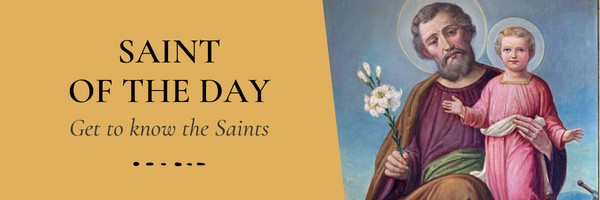
Versions of the Bible
FREE Catholic Classes
Synopsis
- GREEK : Septuagint; Aquila; Theodotion; Symmachus; other versions.
- VERSIONS FROM THE SEPTUAGINT : Vetus Itala or Old Latin; Egyptian or Coptic (Bohairic, Sahidic, Akhmimic, and Fayûmic, i.e. Middle Egyptian or Bashmuric); Ethiopic and Amharic (Falasha, Galla); Gothic; Georgian or Grusian; Syriac; Slavic (Old Slavonic, Russian, Ruthenian, Polish, Czech or Bohemian, Slovak, Serbian or Illyrian, Croation, Bosnian, Dalmatian); Arabic; Armenian.
- VERSIONS FROM THE HEBREW : Chaldaic; Syriac (Peschitto); Arabic (Carshuni); Persian; Samaritan Pentateuch; Vulgate; other Latin versions.
- HEBREW VERSIONS OF THE NEW TESTAMENT
- VERSIONS FROM MIXED SOURCES : Italian; Spanish; Basque; Portuguese; French; German; Dutch and Flemish; Scandinavian (Danish, Swedish, Norwegian, Icelandic); Finnish (Estonian, Laplandish); Hungarian; Celtic (Irish, Scottish, Breton or Armoric, Welsh or Cymric).
- MISCELLANEOUS : Aleutian; Aniwa; Aneitumese; Battak; Benga; Bengali; Chinese; Gipsy or Romany; Hindu; Hindustani; Japanese; Javanese; Mexican; Modern Greek.
- ENGLISH VERSIONS
GREEK (1) The Septuagint
The Septuagint, or Alexandrine, Version, the first and foremost translation of the Hebrew Bible, was made in the third and second centuries B.C. An account of its origin, recensions, and its historical importance has been given above (see SEPTUAGINT VERSION ). It is still the official text of the Greek Church. Among the Latins its authority was explicitly recognized by the Fathers of the Council of Trent, in compliance with whose wishes Sixtus V , in 1587, published an edition of the Vatican Codex. This, with three others, the Complutensian, Aldine, and Grabian, are the leading representative editions available.
In the second century, to meet the demands of both Jews and Christians, three other Greek versions of the Old Testament were produced, though they never took the place of the Septuagint. Only fragmentary remains of them are preserved, chiefly from Origen's "Hexapla". The first and the most original is that of Aquila, a native of Sinope in Pontus, a proselyte to Judaism, and according to St. Jerome, a pupil of Rabbi Akiba who taught in the Palestinian schools, 95-135. Aquila, taking the Hebrew as he found it, proves in his rendering to be "a slave to the letter". When his version appeared, about 130, its rabbinical character won approval from the Jews but distrust from the Christians. It was the favoured among the Greek-speaking Jews of the fourth and fifth centuries, and in the sixth was sanctioned by Justinian for public reading in the synagogues. Then it rapidly fell into disuse and disappeared. Origen and St. Jerome found it of value in the study of the original text and of the methods of Jewish interpretation in the early Christian years.
(3) Version of TheodotionAnother Greek version practically contemporaneous with Aquila's was made by Theodotion, probably an Ephesian Jew or Ebionite. It held a middle place among the ancient Greek translations, preserving the character of a free revision of the Septuagint, the omissions and erroneous renderings of which it corrected. It also showed parts not appearing in the original, as the deuterocanonical fragments of Daniel, the postscript of Job, the Book of Baruch, but not the Book of Esther. It was not approved by the Jews but was favourably received by the Christians. Origin gave it a place in his "Hexapla" and from it supplied parts missing in the Septuagint. St. Irenæus used its text of Daniel, which was afterwards adopted in the Church.
(4) Version of SymmachusThis appeared at the close of the second century. Its author was an Ebionite of Jewish or Samaritan origin. Giving the sense rather than the letter of the Hebrew, he turned its idioms into good Greek, used paraphrases, and translated independently of the earlier versions. His work, though finished and intelligible to readers ignorant of Hebrew, sometimes failed to give the real meaning of the original. It was but little used by the Jews. St. Jerome admired its literary qualities and was often guided by it in preparing the Vulgate.
In limited portions of the Hexapla, Origen made use of other partial Greek versions which he designated as the Quinta, Sexta and Septima, from the numerical position of the columns assigned them in his work, but their authors are unknown and very little can be said of the merits of the versions.
VERSIONS FROM THE SEPTUAGINT (1) The "Vetus Itala" or Old Latin
The origin of the oldest Latin version or versions is involved in much uncertainty. Some contend that there was but one primitive version, others show with strong arguments that there were several. It is generally admitted that long before the end of the second century, Latin translations, though rude and defective, of Tobias, I and II Machabees, and Baruch were in use and that towards the close of the same period, there existed at least one version of the whole Bible, based on the Septuagint and on Greek manuscripts of the New Testament. This was the Vetus Itala, or Old Latin. Its New Testament is possessed complete in some thirty-eight manuscripts, but its Old-Testament text has survived only in parts. As it contained both the protocanonical and the deuterocanonical books and parts of books of the Old Testament, it figured importantly in the history of the Biblical Canon. It exercised a vast influence on the Vulgate and through it on modern translations and the Church language. In the latter part of the fourth century, the text of the Itala was found to have variant readings in different parts of the Church. Pope Damasus therefore requested St. Jerome to undertake its revision. Guided by old Greek manuscripts, he corrected its mistakes and emended such translations as affected the true sense of the Gospels, and probably followed the same method in revising all the books of the New Testament, which he put forth at Rome about 383. In that year, working from the commonly received text of the Septuagint, he made a cursory revision of the Psalter, which was used in the Roman Church until the time of St. Pius V, and is still retained at St. Peter's, Rome, in the Ambrosian Rite at Milan, and in the Invitatory psalm of Matins in the modern Breviary. About 388, using the Hexaplar text as a basis, he revised the Psalter more carefully and this recension, called the Gallican Psalter from becoming current in Gaul, is now read in the Breviary and in the Vulgate. From the same sources he later corrected all the Old-Testament books that he judged canonical, but even in his own day all this revision, excepting the book of Job was lost. The unrevised text of the greater part of the Old Latin Version continued in use in the Western Church until it was supplanted by the Vulgate.
(2) Egyptian, or Coptic, VersionsThe first Christians of Lower Egypt commonly used Greek, but the natives generally spoke Coptic (see EGYPT, VI, COPTIC LITERATURE), which is now recognized in four dialects, viz.: Bohairic, Sahidic, Akhmimic and Fayûmic (Middle Egyptian ). As Christian communities formed and flourished, the Bible was translated into these dialects and it is generally admitted that some versions, if not all, date back to the second century. That they were independent translations from the Greek seems certain, and Biblical criticism has therefore profited by the light they have thrown on the Septuagint and the New-Testament manuscripts. Of these versions the most important are in Bohairic or Memphite, the language used at Memphis and Alexandria, and the Sahidic, the language of the upper Thebais. The former is entirely extant and since the eleventh or twelfth century has been the standard text of the Church in Egypt. The latter exists in large fragments, but little has so far been found of the others.
Fayûmic (Middle Egyptian ) or as it has been termed Bashmuric ( Bushmuric ), one of the Coptic dialects according to the division of Athanasius, Bishop of Cos (eleventh cent.), is the name now applied to some fragmentary versions published as the "Codices Basmyrici" by Zoega ("Catalogus", Rome, 1810).
(3) Ethiopic and Amharic VersionsEarly in the fourth century, St. Frumentius preached the Gospel in Abyssinia and there laid the foundation of the Ethiopic Church. Its version of the Scriptures probably dates from the close of the following century. It undoubtedly originated from the Septuagint and Greek manuscripts, but present texts do not certainly represent the original version and may possibly be a later translation from the Arabic or Coptic.
Falasha Version
This is an Old Testament in Geez, the sacred speech of Abyssinia, among the Falasha in North Abyssinia, who follow the Jewish religion and claim to be descended from the Jewish exiles of the time of Solomon.
Amharic Versions
As a language, the Amharic supplanted the Geez about 1300 and is still in use. Catholic missionaries have made it the medium of their translations of portions of the Scriptures, but the first Amharic Bible was completed in 1810-20 by Asselin de Cherville, French consul at Cairo. A Bible Society reprint appeared in 1842, and a new edition was prepared in 1875 by Krapf, aided by several Abyssinian scholars.
Galla Version
A Gospel of St. Matthew in the language of the South Abyssinian Galla was published by Krapf (Ankobar, 1842). A Galla New Testament in Amharic characters was edited by a Bible Society in 1876; Genesis and Psalms, 1873; Exodus, 1877.
(4) Gothic VersionThe Goths embraced the faith in the third century but in the fourth they fell into Arianism. Their Bishop Ulfilas (318-388), after devising an alphabet, produced a version of the Scriptures from the Septuagint Old Testament and from the Greek of the New. Extant fragments, the oldest of which are of the fifth and sixth century, bear traces of the Septuagint recension of Lucian and of the Syriac versions of the New Testament.
(5) Armenian VersionHistory
In 406 the Armenian alphabet was invented by Mesrob, who five years later completed a translation of the Old and New Testament from the Syriac version into Armenian. This translation was recognized as imperfect, and a few years later Joseph of Baghim and Eznak, disciples of Mesrob, were sent to Edessa to make a new version from the Syriac. When they returned bringing some copies of the Greek version it was seen that their work would be greatly benefited by the use of this "authentic" copy. Consequently some of the translators, including Moses Chorenensis, were sent to study Greek at Alexandria, where the final revision was made, the Old Testament being translated from the Septuagint according to the "Hexapla" of Origen. This version was without delay officially adopted by the authorities in the Armenian Church. Comparatively little use has been made of the Armenian version by scholars engaged in critical work on the Bible , as few of them in the past knew Armenian, and the version moreover was believed to have been modified according to the Peschitto, and even revised under King Haitho II (1224-70), according to the Vulgate. The insertion in particular of the text concerning the three heavenly witnesses ( 1 John 5:7 ) was attributed to him, since it was found in Uscan's first printed edition of the Armenian Bible (Amsterdam, 1666). Modern investigation reveals no solid ground for believing in these revisions. As regards I John, v, 7, it is not necessary to assume its insertion by anyone before Uscan, whose edition is lacking in critical value and embodies many emendations and additions taken from the Vulgate. The Armenian version follows quite closely the "received" Greek text. The variations in the manuscripts are probably due to divergencies in the Greek sources. The version is a witness to the general reading of certain Greek copies of the fifth century.
Principle Editions
The first part of the Armenian version to be printed was the Psalter, published at Venice in 1565 by Abgar. In 1666 Uscan (probably Bishop of Uschovank in Erivan) published at Amsterdam a complete Bible in 4to, and in 1668 a New Testament in 8vo. The former work leaves much to be desired from the standpoint of critical accuracy. Apart from the insertion of the verse I John, v, 7, Ecclesiasticus and IV Esdras were simply translations from the Vulgate made by Uscan himself and the Apocalypse was scarcely less so. The work begun by Uscan was continued and perfected by the Mechitarists and Zohrab published a New Testament (1789), and a critical edition of the whole Bible (1805). Another was issued in 1859. In both these editions the verse I John, v, 7, was omitted as it was not to be found in any of the older manuscripts. The Protestant Bible societies have brought out several editions of the Armenian version both in the classical and in the modern language. Among the former are: Complete Bible (St. Petersburg, 1814; Calcutta, 1817); Old and New Testament separately (St. Petersburg, 1817). Editions in the modern dialect are, among others: Complete Bible (Moscow, 1835); Psalter (Basle, 1844); New Testament (Constantinople, 1860).
(6) Georgian, or Grusian, VersionsApparently kindred to the Armenian and probably derived from in the sixth century is the Gregorian version, showing the influence of the Septuagint and the Greek New Testament. It was revised after the Slav translation by Prince Wakuset (Moscow, 1743), and has appeared later with many changes (e.g., Moscow, 1816; St. Petersburg, 1818).
(7) Syriac VersionsIn the earliest years of Christianity, a Syriac version of the Old Testament made directly from the Hebrew text was employed in the Syrian Church , but in the seventh century, Paul, Bishop of Tella, gave the Monophysites a translation (617) from the Septuagint. It followed literally Origen's Hexaplar text and was later revised by James of Edessa (died 907). In the sixth century there had appeared a version of the Psalter and New Testament from the Greek at the request of Philoxenus, by whose name it has been known. A century later it appeared at Alexandria in a recension of great critical value.
(8) Slavic VersionSaints Cyril and Methodius preached the Gospel to the Slavs in the second half of the ninth century, and St. Cyril, having formed an alphabet, made for them, in Old Ecclesiastical Slavic , or Bulgarian, a translation of the Bible from the Greek. Toward the close of the tenth century this version found its way into Russia with Christianity, and after the twelfth century it underwent many linguistic and textual changes. A complete Slav Bible after an ancient codex of the time of Waldimir (d. 1008) was published at Ostrog in 1581. When Empress Elizabeth ordered a new revision of St. Cyril's translation (1751), the translators used the Ostrog edition, correcting it according to the Septuagint and changing the Old Slavonic in great part to Modern Russian. This has remained the norm for later Russian Bibles.
The United Ruthenians have a version approved by their bishops and printed at Poczajow (1798) and Przemysl (1862).
The first complete Polish Bible was printed at Cracow in 1561, 1574, and 1577. As it was proved unsatisfactory for Catholics, Jacob Wujek, S.J., undertook a new translation from the Vulgate (Cracow, 1593), which was praised by Clement VIII, and reprinted frequently. Other Polish Bibles are a Socinian version (Cracow, 1563), and a Unitarian from the Hebrew by von Budey (Czaslaw, 1572).
In the Czech, or Bohemian, tongue, thirty-three manuscript versions of the entire Bible and twenty-eight of the New Testament are known to have existed in the fifteenth century. A New Testament was printed at Pilsen in 1475 and 1480. A complete Bible by John Pytlik and others appeared at Prague in 1488. In the sixteenth century there were six versions of the whole Bible and sixteen of the New Testament. In the seventeenth century the Jesuits edited the so-called St. Wenceslaus Bible at Prague (1677, 1715, and later). A new translation was made by Durych and Prochaska (Prague, 1778, 1786, 1807). Protestant versions appeared at Pressburg (1787, 1808), Berlin (1807, 1813), and Kisek (1842).
A Slovak version of the Bible for Catholics was made by Bernolak (Gran, 1829).
A Serbian, or Illyrian, version of the Bible was made by Kassich (1632). There are also two manuscript versions, by Stephen Rosy (1750) and Burgadelli (1800).
A Croatian version of the Bible was made by Stephen Istranin and Anton Dalmatin in the sixteenth century.
The Vulgate was translated into Bosnian by Peter Katanic. O.S.F. (Budapest, 1831).
A Dalmatian version with commentary by John Skaric appeared at Vienna (1857-61); a Bible Society edition, the Old Testament by George Danicic and the New Testament by Vuk Karadzic, was also published there (1868).
(9) Arabic VersionsThere exist six or seven Arabic translations of portions of the Old Testament according to the Septuagint, some of them belonging to the tenth century.
VERSIONS DIRECTLY FROM THE HEBREW (1) Chaldaic Versions or Targums
After the Babylonian Captivity, the Jews developed a large use of the Chaldaic, or Aramaic, tongue. To meet their needs the Sacred Books were translated into this dialect, and used in the public services of the synagogues not later than the second century B.C. At first the translations were oral, being largely paraphrastic interpretations with comments. In time rules of exegesis were determined, the translations were fixed in writing, and were thus widely circulated even before the time of Christ Of these Chaldaic versions, called Targums (Paraphrases), there is none extant containing the entire Hebrew Bible.
- The earliest is on the Pentateuch and is known as the Targum of Onkelos, whom tradition has identified with Aquila and whose Greek translation has something of the same literal character. This Targum, however, was produced by some other, probably in Babylon in the third century.
- A Targum on the Prophets, in its present form of the fourth century, is attributed to Jonathan ben Uzziel, to whom the Talmud alludes as a disciple of Hillel. In style it resembles the Targum of Onkelos, but its paraphrase is freer.
- A Targum on the Pentateuch, said to be of Jeruskalmi, or of Pseudo-Jonathan, is also a freer rendition and belongs to the sixth or seventh century.
- There are also Targums on the Hagiographa, Psalms, Job, Proverbs, etc. (See TARGUM.)
The Peschitto
As early as the second century, portions of the Hebrew Bible, as the Pentateuch, the Prophets, and the Psalms, had been translated into Syriac and were in use in the Syrian Church. Gradually the remaining books were given out with versions from the Greek of all the deuterocanonical books except Ecclesiasticus, which was rendered from the Hebrew. The fourth century found the Syrian Christians possessed of a complete translation of the Old Testament, which is known since the ninth century as the Peschitto or "Simple". This name denotes its literal fidelity, or, as others think, a meaning like Vulgate, or Communis, or again indicates its distinction from the version of Paul of Tella, its source, which contains the critical additions of the Hexaplar text. It is the first version of the Hebrew Scriptures made for and by Christians. In antiquity and importance, it ranks next to the Septuagint, according to which it was revised later. A recent edition of the Peschitto was issued from the Dominican printing-press at Mossul (1887-91).
- Of Syriac versions of the New Testament, one of the earliest is the Diatessaron of Tatian.
- The Peschitto New Testament, like the Old, is still used in the Syrian Church ; it was in circulation in the fourth century and existed, in part at least, in the third.
- In 1842 a portion of what is believed to be an independent Syriac version was found in Egypt. Since its publication in 1858 by Dr. Cureton, it is known as the Curetonian text.
- The Sinaitic text of a Syrian version consists of fragments found at Mt. Sinai in 1892, and seems an independent version of great antiquity.
An Arabic version of the Hebrew Bible was made in the tenth century by Saadia ha Gaon. Only its Pentateuch, Minor Prophets, Isaias, Psalms, and Job have been preserved. In 1671 an Arabic Bible was published at Rome under the direction of Sergius Risi, Archbishop of Damascus. It appeared in numerous later editions. A mutilated reprint of it (London, 1822) was circulated by the BibleSociety. To offset this Protestant influence, complete Arabic versions were issued both by the Dominicans at Mossul (1875-8) and the Jesuits at Beirut (1876-8).
Carshuni (Karshuni) Version
This is an Arabic version made in Syriac characters for Syrian Christians chiefly of Mesopotamia, Aleppo, and adjacent parts. A New Testament in Carshuni characters containing in two columns the Syriac Peschitto and the Arabic of the Codex of Erpenius was published at Rome (1703) for the Maronites of Lebanon. A Bible Society edition appeared at Paris (1827).
(4) Persian VersionIn the first half of the sixteenth century Rabbi Jacob Tawus translated literally the Massoretic text of the Pentateuch.
(5) Samaritan Version of the PentateuchFrom at least the fourth century B.C. the Samaritans used a copy of Hebrew Law. It was written in archaic Hebrew characters and differed in some respects from the original. Many of its readings have found favour with not a few Biblical scholars. It was translated with a literal fidelity into Samaritan in the second century B.C. This version was printed in the Polyglots of 1645 and 1647.
(6) The VulgateWhile revising the text of the Old Latin Version, St. Jerome became convinced of the need in the Western Church of a new translation directly from the Hebrew. His Latin scholarship, his acquaintance with Biblical places and customs obtained by residence in Palestine, and his remarkable knowledge of Hebrew and of Jewish exegetical traditions, especially fitted him for a work of this kind. He set himself to the task A.D. 390 and in A.D. 405 completed the protocanonical books of the Old Testament from the Hebrew, and the deuterocanonical Books of Tobias and Judith from the Aramaic. To these were added his revision of the Old Latin, or Gallican, Psalter, the New Testament, revised from the Old Latin with the aid of the original Greek, and the remaining deuterocanonical books, and portions of Esther, and Daniel, just as they existed in the Itala. Thus was formed that version of the Bible which has had no less influence in the Western Church than the Septuagint has had in the Eastern, which has enriched the thought and language of Europe and has been the source of nearly all modern translations of the Scriptures. The Hebrew text used by St. Jerome was comparatively late, being practically that of the Massoretes. For this reason his version, for textual criticism, has less value than the Peschitto and the Septuagint. As a translation it holds a place between these two. It is elegant in style, clear in expression, and on the whole, notwithstanding some freedoms in the way of restricted or amplified readings, it is faithful to the sense of the original. At first it met with little favour. It was looked upon by some as a perversion suggested and encouraged by the Jews. Others held it to be inferior to the Septuagint, and those who recognized its merits feared it would cause dissensions. But it gradually supplanted the Old Latin Version. Adopted by several writers in the fifth century, it came into more general use in the sixth. At least the Spanish churches employed it in the seventh century, and in the ninth it was found in practically the whole Roman Church. Its title "Vulgate", indicating its common use, and belonging to the Old Latin until the seventh century, was firmly established in the thirteenth. In the sixteenth the Council of Trent declared it the authentic version of the Church.
From an early day the text of the Vulgate began to suffer corruptions, mostly through the copyists who introduced familiar readings of the Old Latin or inserted the marginal glosses of the manuscripts which they were transcribing. In the eighth century Alcuin undertook and completed (A.D. 801) a revision with the aid of the best manuscripts then current. Another was made about the same time by Theodulph, Bishop of Orléans. The best known of other and subsequent recensions are those of Lanfranc (d. 1089), of St. Stephen, Abbot of Cîteaux (d. 1134), and of Cardinal Nicolas (d. 1150). Then the universities and religious orders began to publish their "Correctoria biblica", or critical commentaries an the various readings found in the manuscripts and writings of the Fathers. After the first printing of the Vulgate by Gutenberg in 1456, other editions came out rapidly. Their circulation with other Latin versions led to increasing uncertainties as to a standard text and caused the Fathers of the Council of Trent to declare that the Vulgate alone was to be held as "authentic in public readings, discourses, and disputes, and that nobody might dare or presume to reject it on any pretence" (Sess. IV, decr. de editione et usu sacrorum librorum). By this declaration the Council, without depreciating the Hebrew or the Septuagint or any other version then in circulation and without forbidding the original texts, approved the Vulgate and enjoined its public and official use as a text free from error in doctrine and morals. It was left to the Holy See itself to provide for a corrected revision of the Vulgate, but the work went on but slowly. Contributing towards the desired end, John Henten, O.P., published at Louvain, 1547, as amended text with variants, which was favourably received. The same was republished at Antwerp, 1583, with a larger number of variants, by the Louvain theologians under the direction of Lucas of Bruges. In 1590 a Roman edition was prepared by a commission of scholars. After revising it, Sixtus V ordered it to be taken as the standard text. After his death a further revision was carried out under the direction of Franciscus Toletus, S.J., and finally the work was printed in 1598, with its title unchanged: "Biblia Sacra Vulgatæ editionis, Sixti V Pontificis Maximi jussu recognita et edita". This was under the pontificate of Clement VIII, and his name has appeared in the title since 1641. This revision is now the officially recognized version of the Latin Rite and contains the only authorized text of the Vulgate. That it has numerous defects has never been denied, yet it ranks high in the evidence it affords of the competent scholarship that produced it. To bring it into closer touch with the latter developments of textual criticism is the purpose that induced Pius X to entrust to the Benedictines the work of further revision. The importance of this enterprise consists in this that it will reproduce, as correctly as possible, the original translation of St. Jerome , and will thereby furnish biblicists with a reliable clue to an ancient Hebrew text, differing in many details from the Septuagint, or the Massoretic Text (BELLARMINE; VULGATE, REVISION OF).
Other Latin Versions
After St. Jerome the first to translate the Old Testament from the Hebrew into Latin appears to have been Cardinal Carton (d. 1307), Bishop of London, whose work has been lost. Of numerous versions, many of which have perished or are preserved only in manuscripts, noteworthy are the Psalms from the Hebrew by Felix Pratensis, O.S.A. (Venice, 1515). Another Psalter with a version of Job was made by Aug. Justinian, O.P. (Paris, 1516). Kantes Pagninus, O.P. (d. 1514), made an interlinear version of both the Old and New Testaments from the original languages, which by its literal fidelity pleased Christians and Jews and was much used by the Reformers. A revision of this translation resulting in a text even more literal was made by Arias Montano. His work appeared in the Antwerp Polyglot (1572). Another literal version was undertaken by Thomas Malvenda, O.P. (d. 1628), as the basis of an extensive commentary but death ended his labours at the fifteenth chapter of Ezechiel. His work was published at Lyons (1650). In 1763 the Oratorian F. Houbigant edited his "Biblia Veteris Testamenti", rendered from the Hebrew. In the "Biblia Maxima" (Paris, 1660), J. de la Haye, O.Min., collected a great number of variant readings of older Latin versions. A revision of the Vulgate (Venice, 1542, 1557) by Isadore Clarius gave offence on account of many arbitrary changes in the text and was put on the Index.
Among the Reformers, Latin Scriptural labours were largely confined to commentaries and the translation of single books, e.g. Melanchthon, Proverbs (1524); Luther, Deuteronomy (1525); Brentius, Job (1527); Drach, Psalms (1540), Daniel (1544), and Joel (1565). A complete Hebrew-Latin Old Testament was given out by Sebastian Münster (Basle, 1534-46). Another Latin version of the Old Testament (Zurich, 1543, and Paris, 1545), bearing the name of Leo Juda, was partly the work of Bibliander, who translated Ezechiel, Daniel, Job, Ecclesiastes, Canticles, and the last forty-eight psalms. Its Apocrypha were translated from the Greek by P. Cholin. A version whose author, Castalion, affected a style of classic elegance, was printed at Basle in 1551. Other versions were put forth by Tremellius and Junius or du Jon (Frankfurt, 1575-9), and by Luc and Andrew Osiander, who sought to correct the Vulgate after the Hebrew.
HEBREW VERSIONS OF THE NEW TESTAMENT
In 1537 Sebastian Münster published an old translation of the Gospel of St. Matthew , in a rabbinical Hebrew by Schemtob Isaac. Improved editions were made by Tillet (1555), and by Herbst (Göttingen, 1879). The four Gospels were done into classic Hebrew by a converted Jew, Giona, at Rome (1668). The first complete New Testament in Hebrew was made by Elias Hutter and was published in the Nuremberg Polyglot (1600), revised by Robertson (London, 1666). A corrected New Testament in Hebrew was given out by Caddock (London, 1798). A number of Bible Society versions have appeared since 1818, and in 1866 Reichhardt and Biesenthal edited a text with accents and vowels. This was revised by Delitzsch in 1877.
MIXED SOURCES Italian Versions
Evidences of early versions of at least portions of the Scriptures for liturgical purposes, public readings, and private devotion are not wanting in the history of the Church among any of the peoples to whom her missionaries carried the Gospel. Leaving them and even many later recensions unnoticed, this article will touch on only the more important versions which have had some part and influence in national religious life . In Italy popular knowledge of the Bible in the thirteenth and fourteenth centuries was spread chiefly by the Franciscan and Dominican Friars. A complete version in the vernacular, a manuscript preserved in the National Library at Paris, was made by Nicholas de Nardò, O.P., in 1472. The first printed Bible (Venice, 1471) was due to Nicholas Malermi, O. Camald. A revision of this, with notes, rubrics, and résumés largely after the Biblical commentaries of Nicholas of Lyra , was made by Marine de Veneto, O.P. (Venice, 1477). Santes Marmochini, O.P. (d. 1545), corrected the heretical version of Bruccioli according to the Vulgate (Venice, 1538, 1547, etc.). Two noteworthy translations of the New Testament were made by Zaccaria Florentini, O.P. (Venice, 1542), and Domenico Gigli (Venice, 1551). The most widely used complete version was produced by Antonio Martini, Archbishop of Florence (Turin, 1776-81). It was approved by Pius VI and has been widely circulated.
The first complete Protestant Bible in Italian was printed at Geneva (1562). It was made up of the slightly revised heretical text of Bruccioli's Old Testament (1532), which was a perversion of the Latin of Kantes Pagninus, and not, as pretended, a translation from original sources, and of the apostate Massimo Teofilo's New Testament, first published at Lyons (1551), and revised by Gallars and Beza. This was adopted by the Biblesocieties. Martini's translation was also taken and shaped to Protestant purposes by the British and Foreign Bible Society ( New Testament, 1813, and Bible, 1821).
Spanish VersionsSeveral manuscripts of early Spanish versions, e.g. the Biblia Alfonsina, and some made from the Hebrew, are preserved at the Escurial, Madrid. A later work (sixteenth century) is called the Bible of Quiroga, a convert from Judaism, who rose to be cardinal inquisitor. The first printed Bible (Valencia, 1478), following an Old-Testament version from the French and Latin by Romeu de Sabruguera, O.P., was in the Catalonian dialect and was the work of the General of the Carthusians, Boniface Ferrer (d. 1417), a brother of St. Vincent Ferrer, O.P. His manuscript was revised and extensively corrected by Jaime Borrell, O.P. A later translation, of classic elegance and with copious notes, by Philip Scio de S. Miguel, was published at Madrid (1794). Another with a paraphrastic commentary in the text was given out at Madrid (1823) by Amat, but the work is said to have been taken from a manuscript of Father Petisco, S.J. A New Testament by Francisco do Enzinas (Antwerp, 1543) was later much used by the British and Foreign Bible Society. It also adopted a complete version from the Vulgate by the apostate Cassiodore Reyna (Basle, 1596), and a revision of this by the apostate Cypriano de Valera (Amsterdam, 1602). A Lutheran version, the so-called Biblia del Oso, was published by Juan de Valdes (Basle, 1567-69). The Bible of Ferrara, or the Bible of the Jews, was a Spanish version from the Hebrew by Abraham Usque, a Portuguese Jew. Under a pseudonym he issued an edition of the same for Christians. It gained considerable authority and was many times reprinted. A revision by Jos. Athias appeared at Amsterdam in 1661.
Portuguese VersionsA Portuguese Bible for Catholics was issued by Ant. Pereira de Figueiredo at Lisbon (1784). A New Testament (Amsterdam, 1712), and the Pentateuch and historical books (1719) by J. Ferreira a Almeida, a "convert from Rome ", supplied the Biblesocieties with a version for Portuguese Protestants.
Basque VersionsA New Testament by Jean Licarrague (Rochelle, 1571) is probably the earliest Biblical work in the Basque tongue. The first Catholic New Testament , translated by Jean Haraneder and later revised by two priests, was published at Bayonne (1855). A complete Bible after the Vulgate was edited at London (1859-65), under the patronage of Prince Lucien Bonaparte. Various portions of the Scriptures and revisions have appeared since.
French VersionsVersions of the Psalms and the Apocalypse, and a metrical rendering of the Book of Kings, appeared as early as the seventh century. Up to the fourteenth century, many Bible histories were produced. A complete version of the Bible was made in the thirteenth century; the translation of the various parts is of unequal merit. The fourteenth century manuscript Anglo-Norman Bible follows it closely. Independent of either in the manuscript Bible of King John the Good, which though unfinished is described as a "work of science and good taste". Done in the second half of the fourteenth century, it is largely the work of the Dominicans Jean de Sy, Jehan Nicolas, William Vivien, and Jehan de Chambly. Another incomplete version based on the thirteenth-century Bible was the work of Raoul de Presles and is known as the Bible of Charles V. About 1478, appearing at Lyons among the incunabula of France, is a New Testament by Julian Macho and Pierre Farget, and the books of the Old Testament history, published six times. A complete version done literally from the Vulgate and the Greek New Testament was given out by Lefèvre d'Etaples (Antwerp, 1530, 1534, 1541). After revisions by Nicolas de Leuze (Antwerp, 1548), and by Louvain theologians (1550), it remained a standard for over a century. Only verbal improvements were the versions of Pierre de Besse (1608), Pierre Frizon (1621), and Béron (1647). By order of Louis XIII, Jacques Corbin edited his version of the Vulgate (Paris, 1643-61), A translation by René Benoist (Paris, 1566) savoured of Calvinism and aroused much controversy. Well known and widely read were the Latin-French editions of Calmet (Paris, 1770-16) and de Carrières (Paris, 1709-17); the latter gave out the French alone (1741), but it was not without errors. A version from original sources (Cologne, 1739; Paris, 1753, 1777, 1819) was the work of Le Gros. Another popular French-Latin Bible was put forth by de Vence (Paris, 1748, 1750). It was revised and furnished with Carrières's translation and a commentary after Calmet by Rondet (Paris, 1767-73; Nîmes, 1779). A translation which went through some six editions despite inaccuracies was published at Paris (1821-2) by de Genoude. Bourassé and Janvier gave out a complete version at Tours in 1865. Arnaud published his translations at Paris (1881), but perhaps the most popular of the French versions is that of J.-B. Glaire (Paris, 1871-3, later edited with notes by M. Vigouroux. These complete versions but partially represent the extensive Biblical work of the French Catholics.
The first and nearest approach to a national Protestant version for France was made (Serrières, 1535) by Pierre-Robert Olivetan, Calvin's cousin. He was supposed on his own statement to have translated independently, but it is clear that he used almost wholly the New Testament with the interlinear version of Pagninus. Corrected by Calvin, it was republished at Geneva in 1545, and later in other editions, the principal one being the revision (1588) of the pastors of Geneva. This was supplanted by the recension of Osterwald (1744), an improvement in style, but a work replete with errors. Others differing but little from the Olivetan-Genevan versions were edited by Castalio (Basle, 1555) and Martin (Amsterdam, 1707). A version from original sources, and accepted by the Oxford University Press for national official use, was given out by Segond (Geneva, 1874; Nancy, 1877; and Geneva, 1879).
The Jansenists are represented in a New Testament translation (Amsterdam, 1667) by Isaac Le Maistre de Sacy and Antoine Arnauld. The work contained many errors and the writers' bias appeared in frequent alterations. A version of the whole Bible was undertaken by de Sacy in 1666, but death intervened; it was completed by du Fossé and Huré (Paris, 1682-1706; Brussels, 1705-30; Nîmes, 1781). Whilst the work was never censured as a whole, several of its New-Testament books were condemned by individual bishops. A Jewish Bible by S. Cahen, presenting both the Hebrew and the French with notes philological, etc., was issued at Paris (1831-51), but its text has been found incorrect and its notes often contradictory. A Rationalist Bible after the Hebrew and Greek by Ledrain appeared at Paris (1886-96).
German VersionsThe history of Bibli
Join the Movement
When you sign up below, you don't just join an email list - you're joining an entire movement for Free world class Catholic education.
An Urgent Message from Sister Sara – Please Watch
- Advent / Christmas
- 7 Morning Prayers
- Mysteries of the Rosary
- Litany of the Bl. Virgin Mary
- Popular Saints
- Popular Prayers
- Female Saints
- Saint Feast Days by Month
- Stations of the Cross
- St. Francis of Assisi
- St. Michael the Archangel
- The Apostles' Creed
- Unfailing Prayer to St. Anthony
- Pray the Rosary
![]()
Copyright 2026 Catholic Online. All materials contained on this site, whether written, audible or visual are the exclusive property of Catholic Online and are protected under U.S. and International copyright laws, © Copyright 2026 Catholic Online. Any unauthorized use, without prior written consent of Catholic Online is strictly forbidden and prohibited.
Catholic Online is a Project of Your Catholic Voice Foundation, a Not-for-Profit Corporation. Your Catholic Voice Foundation has been granted a recognition of tax exemption under Section 501(c)(3) of the Internal Revenue Code. Federal Tax Identification Number: 81-0596847. Your gift is tax-deductible as allowed by law.











